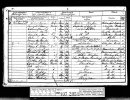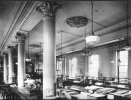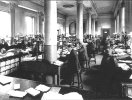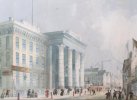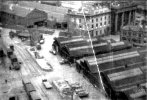Heartland
master brummie
The restoration of the surviving station building started on September 02nd.
After seeing many references to the structure as being the London and Birmingham Railway station building, an observation which must be made is that it served as part of the operation of the railway, where in reality it was a hotel. There is even a reference on the 1841 census that lists the occupants on census day. The train shed and booking office was beyond and was removed when the goods shed was constructed, The hotel became goods offices.
In the thread about the 1850 explosion at Curzon Street, the gas supply to the Hotel is mentioned.
After seeing many references to the structure as being the London and Birmingham Railway station building, an observation which must be made is that it served as part of the operation of the railway, where in reality it was a hotel. There is even a reference on the 1841 census that lists the occupants on census day. The train shed and booking office was beyond and was removed when the goods shed was constructed, The hotel became goods offices.
In the thread about the 1850 explosion at Curzon Street, the gas supply to the Hotel is mentioned.




